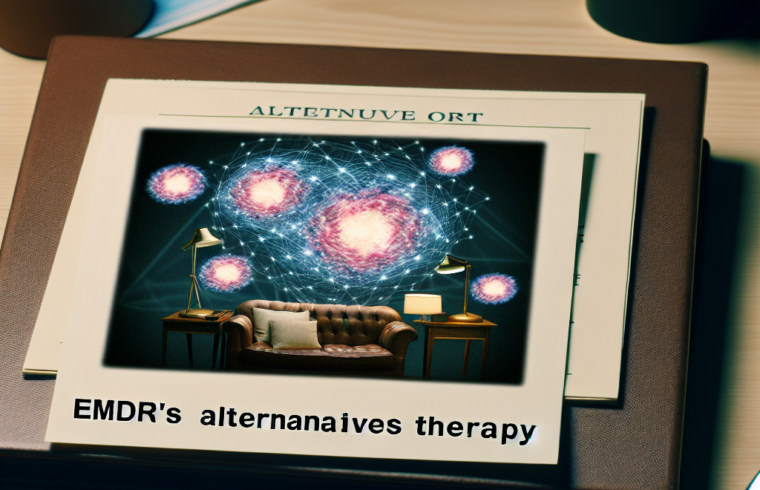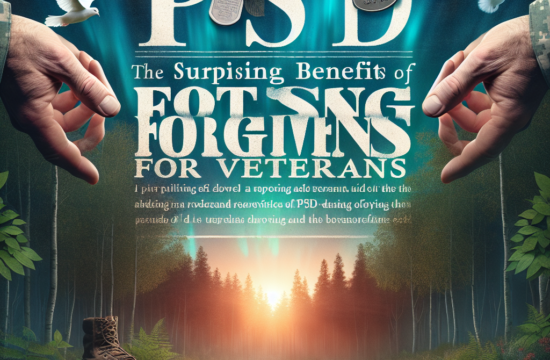==> Thank you for reading this post! Click Here If you are looking for support and Victory over PTSD.
Mindfulness-Based Therapies
Understanding Mindfulness
So, let’s kick off with mindfulness. This approach focuses on being present in the moment. You know that feeling when you’re completely engrossed in something and lose track of time? That’s the kind of presence we’re talking about! In mindfulness therapy, practitioners guide you through techniques to help you observe your thoughts and feelings without judgment.
Mindfulness isn’t just a buzzword—it’s backed by science! Studies show that mindfulness helps reduce anxiety and stress, which can be super beneficial for PTSD sufferers. I found that when I practiced mindfulness, it became easier to manage my thoughts, and I felt more in control of my mind.
Ultimately, this approach teaches you to pause and breathe, helping you to switch the brain from survival mode to a more healing, relaxed state. Who doesn’t want a little more peace in their life, right?
Practicing Mindfulness Techniques
To get into mindfulness, you could start with simple practices like deep breathing or body scans. You might be thinking, “I don’t have time for that!” But seriously, give yourself those 5 minutes. Find a comfy spot, close your eyes, and just breathe. Focus on the air filling your lungs and then slowly releasing it. Sounds easy? It’s more powerful than you think!
I remember vividly the first time I tried a body scan meditation. It transformed how I perceived my body and emotions. As I scanned through my body, I learned to recognize where I held tension and stress, allowing me to consciously release those areas. Each session left me feeling a bit lighter.
Just know that practice makes perfect. The more you engage in these mindfulness exercises, the more natural they become, and before long, you’ll be a pro at riding the wave of your emotions instead of being wiped out by them.
Finding Mindfulness Support
You don’t have to embark on this mindfulness journey alone. There are loads of resources out there! Take a peek at local community centers for mindfulness classes or workshops. Trust me; they’re way more fun with a group!
Also, there are some fantastic apps like Headspace or Calm that make it easy to access guided meditations anytime. I personally love putting on some guided meditation when I need a mental reset during the day. It’s like hitting the refresh button for your brain!
In addition, consider seeking support from a therapist who specializes in mindfulness-based cognitive therapy. They can tailor sessions to fit your specific needs. You’ll be amazed at the progress you can make with the right help!
Cognitive Behavioral Therapy (CBT)
What is CBT?
Next up, let’s chat about Cognitive Behavioral Therapy—CBT for short. This therapy method focuses on the connection between your thoughts, feelings, and actions. The cool part? It’s all about breaking negative thought patterns that keep you stuck.
What I love about CBT is its structured approach. It feels really empowering to understand how my thoughts influenced my emotions and behaviors. You identify negative beliefs about yourself, challenge them, and replace them with more balanced views. It’s like giving your mind a serious makeover!
Many folks have found relief through CBT, especially those with PTSD. It helps you learn coping skills and develop a more positive outlook over time. And let me tell you, the “aha!” moments are truly life-changing!
How CBT Works
CBT is often composed of numerous sessions where you’ll work collaboratively with a therapist. They’ll help you identify your thought patterns and set specific, achievable goals for therapy. Each session might involve talking through recent experiences and unraveling those thoughts that just don’t serve you well.
I remember during one of my CBT sessions, we focused on a recurring negative thought I had. The therapist encouraged me to challenge it, and when I did, I realized just how irrational it was. By facing those thoughts head-on, I felt a weight lift off my shoulders.
It’s essential to put in the work outside of therapy too. Keeping a journal to track your thoughts and feelings can offer great insight. It might feel awkward at first, but trust me; it’s a game-changer when you see patterns emerge.
Seeking CBT Therapy
Finding the right CBT therapist is crucial. Look for someone who has experience working with PTSD and check if they offer a format that suits you—be it one-on-one sessions or group therapy. Personally, I appreciate the one-on-one sessions for more individualized attention.
Many therapists now also offer virtual sessions, making it super convenient to fit therapy into your busy life. You can connect from the comfort of your home, and there’s no commute involved. What a win-win!
Don’t hesitate to ask for recommendations or search for therapists online. Trust your gut—finding someone you connect with is vital for this process. You deserve to find a supportive ally on your healing journey!
Somatic Experiencing
What is Somatic Experiencing?
This method emphasizes the importance of your body in releasing trauma. Somatic Experiencing invites you to be in tune with your body, recognizing how it holds onto trauma. I found exploring this practice refreshing, as it shifts the focus from the mind to the sensations in the body.
It’s based on the idea that trauma can become embedded in our bodies and that releasing it physically can foster emotional recovery. I remember one session where I had to pay careful attention to a tightness in my chest. It was surprising to realize how much emotions could be felt as physical sensations!
Through guided sessions, you explore these sensations, learn to navigate discomfort, and ultimately work toward a state of balance. It’s powerful work that requires patience and gentle exploration.
Practicing Somatic Techniques
With Somatic Experiencing, you might engage in techniques such as breathwork, grounding exercises, or movement. Don’t be surprised if you tap into emotions you didn’t even know were there—this is all part of the process!
I remember when I first tried a grounding exercise where I focused on the sensation of my feet against the floor. It may seem simple, but it was incredibly grounding and brought an immediate sense of safety and calm. Who knew a little awareness of my feet could be so impactful?
As you continue, you might explore the way energy moves through your body and how releasing physical tensions can lead to emotional release. Just be sure to go at your own pace; this journey is deeply personal!
Finding a Somatic Therapist
If Somatic Experiencing resonates with you, search for a therapist specializing in this method. A good therapist will help you navigate this process with care. Do ensure they create a safe and supportive space, as feeling comfortable is key in this type of therapy.
Get Support and Help with Recovery! Visit us for more Information and Support
Like CBT, many practitioners now offer virtual sessions or workshops, which can be a great way to start without feeling overwhelmed. I always find a sense of community in group workshops, as it’s reassuring to know I’m not alone in this journey!
Keep an open mind and be ready to explore what your body is telling you. It might just be the missing link in your healing process!
Art Therapy
The Essence of Art Therapy
Art therapy is such a creative way to express emotions for those who might find it difficult to articulate their feelings verbally. Why not paint, sketch, or create as a way to explore what’s going on internally? That’s the core philosophy behind this type of therapy!
While I’m no Picasso, I found that doodling my feelings was incredibly liberating. This therapy offers a form of emotional gratification and helps in reducing anxiety. Plus, the best part is: there’s no judgment—art is all about personal expression!
Through the process, you might become more self-aware and gain insights into unresolved feelings. It might feel scary at first, but it can also be incredibly rewarding to put your thoughts and emotions on paper or canvas.
Engaging in Art Therapy Practices
The fun part about art therapy is that there are no rules! You could paint, color, sculpt, or even create a vision board. The objective is to engage with the medium in a way that feels right to you. Try using colors that represent your mood or create something abstract to express what you’re feeling.
Over time, let’s say you find a particular theme emerging in your artwork; work with it! There might be deeper emotions tied to that. I once painted dark, swirling colors during a session, and later realized it represented the overload of emotions I was feeling. Connecting those dots was a real eye-opener!
Lastly, if you’re not into traditional art methods, consider digital art or photography. The beauty of art therapy is that it emphasizes creativity, however that looks for you. Just let it flow and see where your imagination takes you!
Connecting with an Art Therapist
If art therapy intrigues you, it’s worth searching for a therapist who specializes in this field. A qualified art therapist will guide you through your feelings and ensure you feel safe expressing yourself. Remember, the goal is to be open and explore personal themes without criticism.
Many therapists offer sessions that include traditional talk therapy paired with art therapy modalities, which can be beneficial for creating a multi-faceted healing experience. If you prefer working in a group, look for local art therapy workshops to explore creative expression alongside others!
Art therapy can be such a vibrant pathway toward healing trauma. So grab a brush or some crayons and start exploring the colors of your emotions—you might just discover incredible insights!
Nature Therapy
The Benefits of Nature on Mental Health
Last but definitely not least, let’s explore nature therapy! We’re all familiar with that soothing feeling of being outside, right? Nature therapy capitalizes on that very instinct! Spending time outdoors has proven psychological benefits, making it a fantastic alternative for PTSD treatment.
Whether it’s hiking, gardening, or simply taking a leisurely walk in the park, nature therapy promotes well-being and connection. I’ve found that time spent outdoors leaves me feeling refreshed and recharged. It’s like nature gives my brain a much-needed reset!
There’s something inherently grounding about being outside—whether it’s the sound of rustling leaves or the feel of grass beneath my feet. Nature has its way of reminding us that healing takes time and is a natural part of living.
Activities in Nature Therapy
Your nature therapy journey could involve various activities like hiking trails, mindfulness walks, or even contemplative sitting in a beautiful space. You could also engage in community gardening or simply get involved in local outdoor initiatives!
One of my favorite nature therapy experiences was a hiking group focused on mindfulness in nature. We took the time to pause and appreciate the small details, like the intricate patterns of leaves or the rhythm of our breath. It was an experience that left me feeling deeply connected to the world around me.
Mix it up! Choose activities that resonate with you, be it kayaking, cycling, or exploring botanical gardens. Nature has a lot to offer, so find what brings you joy!
Finding Nature Therapy Programs
Looking for nature therapy programs can reveal a treasure trove of options. Many local parks and community organizations offer structured programs focused on healing through nature. I’d suggest checking out outdoor schools that focus on incorporating nature in therapeutic practices.
If you prefer a more self-guided experience, simply committing to regular outdoor time can enhance your mental well-being. Aim for consistency and watch that connection to nature deepen over time!
And remember, even a few minutes outside can make a world of difference. So go ahead—take that stroll, breathe in that fresh air, and soak in the beauty around you!
FAQs
1. What types of therapy can I explore as alternatives to EMDR for PTSD?
You can explore a variety of therapies, including mindfulness-based therapies, cognitive behavioral therapy (CBT), somatic experiencing, art therapy, and nature therapy. Each has unique approaches to help with healing.
2. How do I find a therapist who specializes in these alternative treatments?
Look for licensed therapists in your area who have specific training in these methods. Online directories, community health centers, and even referrals from friends can help you find the right fit.
3. Is it okay to try multiple therapies at once?
Absolutely! Many individuals find that a combination of therapies works best for them. Just ensure to communicate with your therapists about what you’re doing to ensure a cohesive approach.
4. How can I gauge if a particular therapy is working for me?
It’s essential to be mindful of changes in your emotions, thoughts, and physical sensations. Journaling your experiences can be beneficial to track your progress and feelings over time.
5. Can I practice these therapies on my own?
Many elements of these therapies can be practiced independently, like mindfulness exercises or nature walks. However, working with a trained professional can provide guidance and support that enhances your experience.











